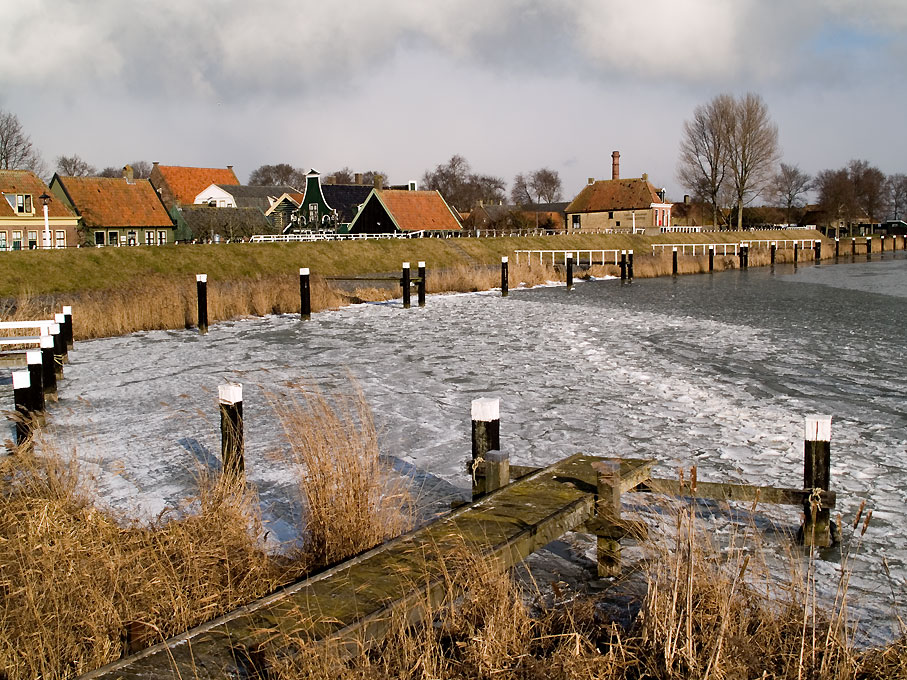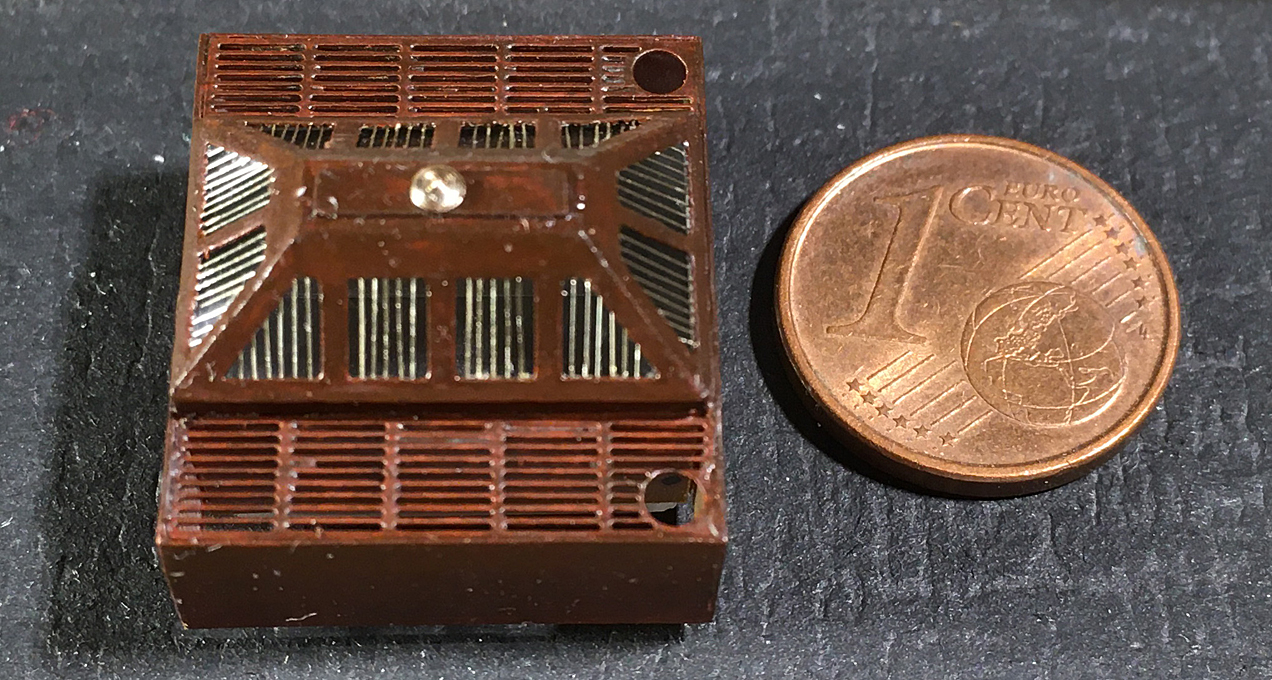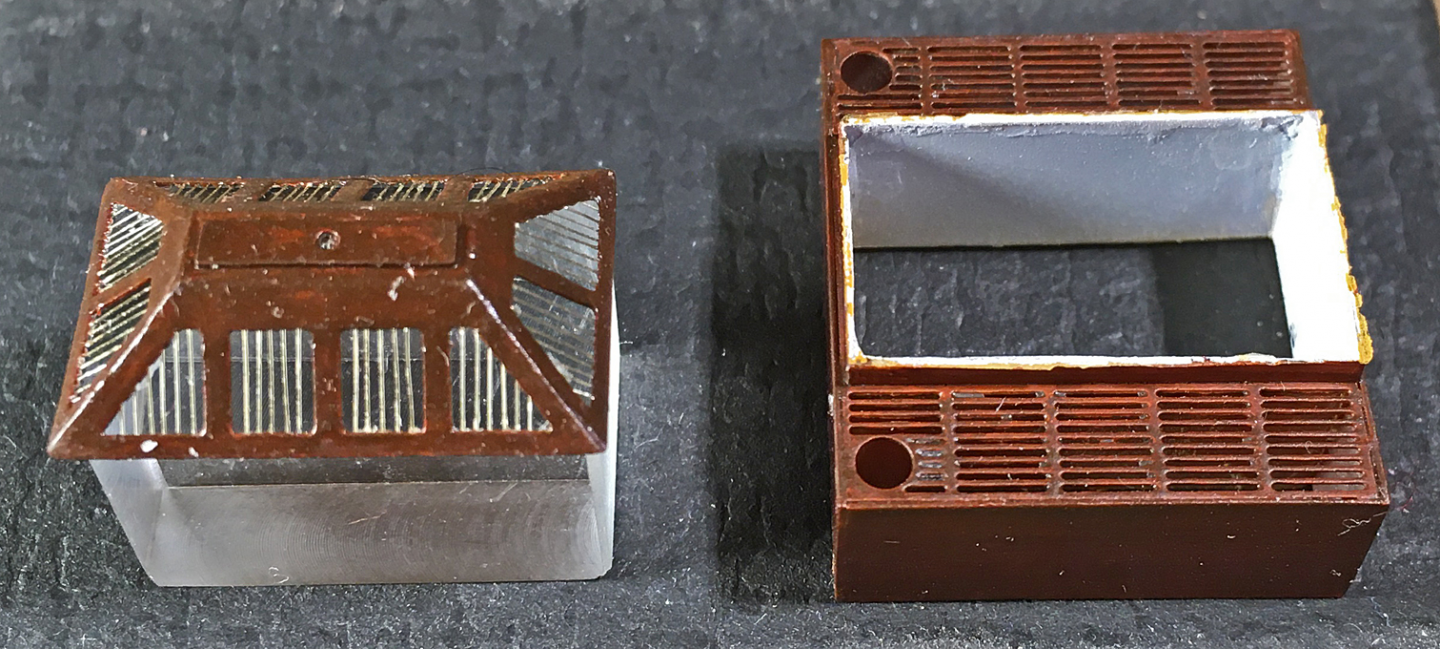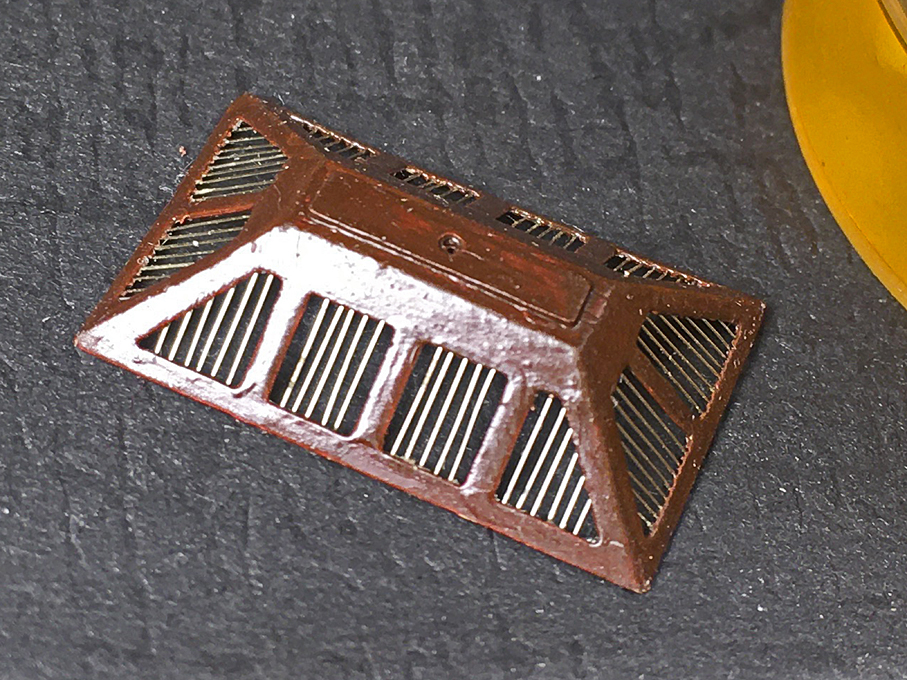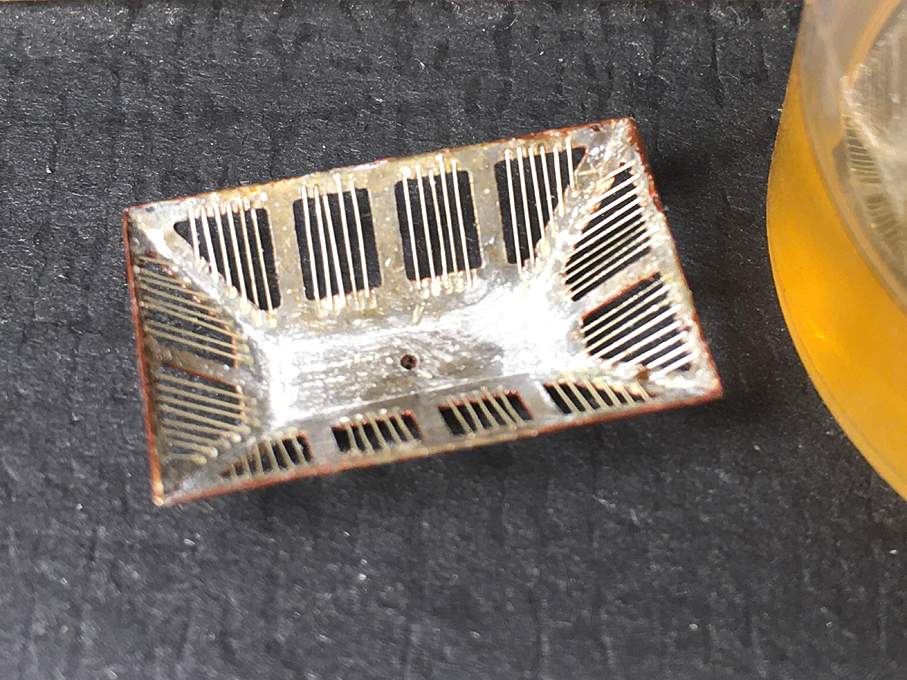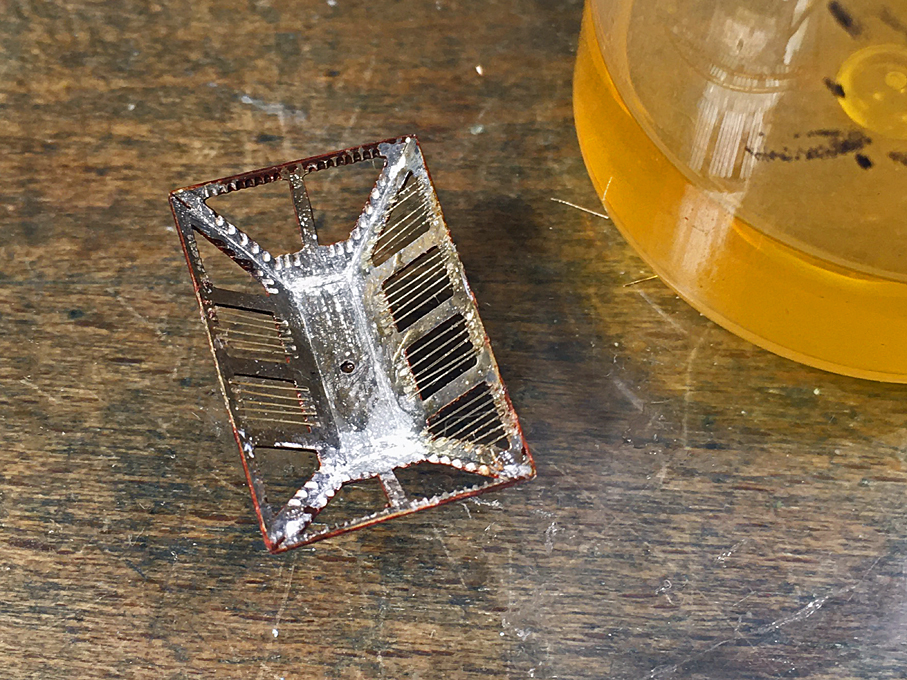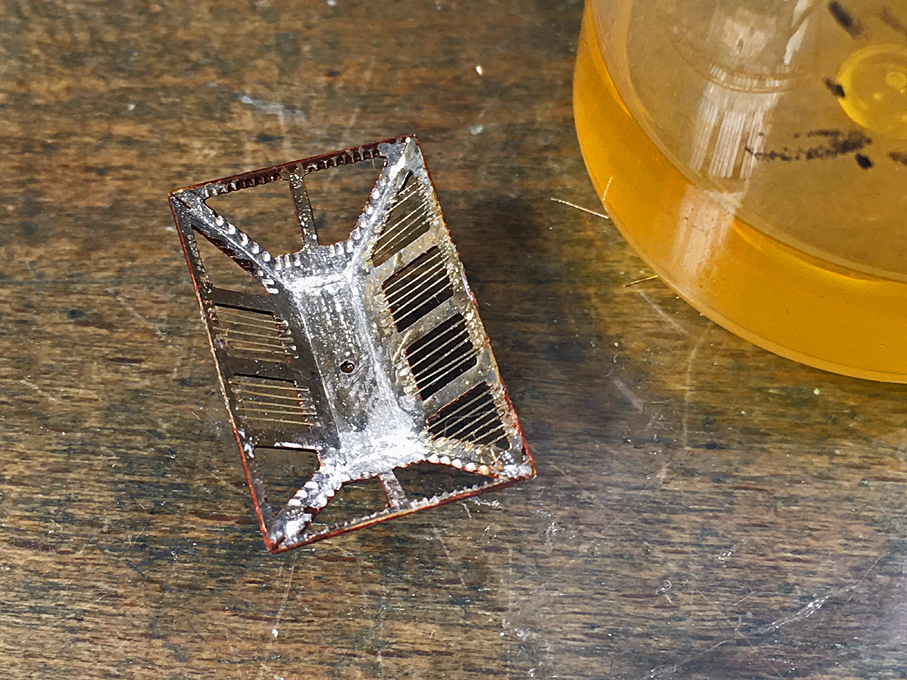-
Posts
6,529 -
Joined
-
Last visited
Content Type
Profiles
Forums
Gallery
Events
Everything posted by wefalck
-
Have any volumes covering the era post-1815 actually been published ? I only see the first two volumes popping up, covering the period 1523-1715 and 1715-1815 respectively. Or is it the same story as with Mondfeld's book, where the later 19th volume was never written/published - a most interesting and large uncovered era in modern literature.
-
Over here in Europe they are very common, probably the most common rig on trawlers. They also replaced, I think, beam-trawls except in the shrimp fisheries. The 'otters' do not actually scrape along the sea-bottom, unlike the beam-trawl, and therefore considered more environmentally friendly.
-
'Otter' are the 'doors'. Not sure why they are called otter, but it probably has to do with the otter-like shape of floats that were used in mines-sweeping gear, where they have a similar function as the 'doors'. The 'Zeese' was held open by the spars projecting from the boat, rather than 'doors' or beams, as in beam-trawls.
-
Slightly off topic: 2009 I lived in Alkmaar, Noord-Holland, and it was the first winter for many years, when they had a period of real frost, cold enough for the canals etc. to freeze over. On smaller ones people could even skate (missed that myself because of other occupations and the thaw came only a couple of days later). The Dutch were looking forward to do the 'Cities Tour' again, whereby you skate from place to place around the Ijsselmeer/Zuiderzee. We also had a little bit of snow and it was the first time my neighbours' seven year old daughter experienced snow. The children around got so exited that day, that I didn't need to worry about cleaning the pavement in front of my house - when I got home from work, they had swept up every snowflake in the neighbourhood to build a snowman The climate now is rather different from that of the so-called Little Ice-Age of the 16th and 17th this is portrayed so vividly in many winter-landscape of the painters of the Dutch and Flemish Golden Age. BTW, the Zeesboot or Zeesenboot (both are correct) uses a particular type of trawl-net that is spread between two booms projecting from the drifting boat - certain types of botters used a similar net and fishing technique.
-
Then I failed 😕 ... the idea was to create the feeling of bright, but freezing cold day - like this: The Zuiderzeemuseum in Enkhuizen in February 2009.
-
Keith, talking about the 'warmth' of a winter-setting with the Zuiderzee frozen over sounds like a contradiction in terms Anyway, thank you very much for your kind words ! Brian, you may have come across material on the Zeesboot on the Web, there is quite a bit, as various specimens have been saved and restored over the decades, even during GDR times. There is also a very detailed building-log for a 1:20 scale model on a German forum: https://www.segelschiffsmodellbau.com/t2889f685-Zeesboot-um-ca-Massstab.html. The text, of course, is in German, but you probably can translate it with the help of Google. It is a wonderful model, I have seen it myself. The model is based on the reconstructed specimen in the Nautineum in Stralsund (https://www.nautineum.de). We held the GA of our association there in 2019 and I have various pictures of the boat.
-

sail plan for Ballahoo (Fish class) topsail schooner
wefalck replied to georgeband's topic in Masting, rigging and sails
'Taking in' a sail would mean to clew it up or fasten, if it is rigged permanently. Otherwise ii would mean sending it down. For instance, the main top-sail with square head would be sent down, as it is always set 'flying'. In later years, when triangular top-sails were used, these could be clewed up to the top-mast. BTW, an indication, whether a square fore-sail could be set would be the presence of foot-ropes on the lower yard. In order to manage this sail there would need to be foot-ropes. At least in the Baltic many, if not most gaff-rigged schooners as well the sloop- or cutter-rigged smacks (whatever they may actually be called) could set a large square fore-sail flying. They did not have a parrel or similar, but were shackled to a stay that ran down the mast. Sometimes they only had a halliard and braces, sometimes only topping-lifts and braces, and sometimes all of them. As crewing was expensive and you probably needed at least three crew (including the skipper) to manage such rig, rather being square this sail was triangular with a single tack fastened to somewhere near the mast. When going about, one needed to attend only to the braces, as there were no sheets. Such schooners seem to have been run sometimes just by the master and a mate or even only a boy. When rigged with top-sails, one would need a crew of at least four. This is talking about the merchant navy.- 22 replies
-
- caldercraft
- jotika
-
(and 4 more)
Tagged with:
-
Are you aware of the concept of table saw push-blocks and -sticks ? Have a look here: https://www.google.com/search?q=table+saw+push+block&newwindow=1&sxsrf=AOaemvKPStG6ZDKxbv40FJt5DdRaG2gdEw:1640887753307&source=lnms&tbm=isch&sa=X&ved=2ahUKEwicqJudj4z1AhWnxoUKHZZLAwMQ_AUoAnoECAEQBA&biw=1276&bih=695&dpr=2 They come in all sorts of guises and configuration, can be mad by oneself or Rolls-Royce-versions can be bought ...
-

sail plan for Ballahoo (Fish class) topsail schooner
wefalck replied to georgeband's topic in Masting, rigging and sails
Nomenclature and terminology can be discussed for hours without conclusive results. People in the old times seem to have been much less preoccupied by this than modern ship-modellers and -historians. One should rather focus on the function. Sail-plans before the end of the 19th century tended to be much more flexible. Wooden spars and the necessarily installations could be changed much more quickly and even at sea, compared to the later ships with steel spars. In desperation, every piece of available canvass could be set somewhere on the masts. The rigging details were also the prerogative of the master, at least on commercial vessels, who would observe the vessels performance and have alterations made, if needed. Concerning the description/definition of a 'flying-jib', I think there are two possibilities: it could be the head-sail that is set from the 'flying-jib-boom' or it could be an outer head-sail that is set flying. I am not certain about the actual time-frame, but I think around the middle of the 18th century the jib-boom was extended with another spar, the flying-jib-boom. As the term indicates, it was not rigged all the time and in consequence may not have a stay attached to it. Around the second quarter of the 19th century it tended to become a permanent feature, at least on larger ships, and merged into one spar with the jib-boom. In consequence, the jib-boom now had two stays attached to it, namely the fore-topgallant-stay around its middle, and the fore-royal-stay at its outer end. This now allowed the once really flying jib-sail to be attached with hanks to the fore-royal-stay. ___________ I have some reservations towards Marquardt and Mondfeld, which are not meant to diminish their merits in anyway. However, one should always try to corroborate their information with other sources. I think after the 1980s, when his writing activities really began, Marquardt did not have access anymore to much original European sources, so he draws on the observations he made in the decades before and on the models he restored between the end of WW2 and his emigration to Australia. The good thing is that he did not venture much outside the 18th century. To the contrary, Mondfeld began for commercial reasons to cover periods and regions in his later works on which he seems to have had only limited knowledge. It would be quite difficult for a single person to have a real in-depth knowledge of the whole sailing-ship era in all countries, but this is what his modelling encyclopedia seems to attempt. To be honest, I do not own any of his books, but looking over them occassionally and what I hear from others seems to support this perception.- 22 replies
-
- caldercraft
- jotika
-
(and 4 more)
Tagged with:
-
Yes, it is rather strange, how often we do things against better knowledge and spite of recognising at the moment that we shouldn't do it ... I gather it is often lazyness ... My father had a peculiar way of rolling up his shirt-sleeves, not inside-out, but outside-in. He explained to me that he was taught that by his father, who trained as locks-smith, joined the Imperial German Navy in the early 1900s and after WWI worked on shipyards. The purpose was to prevent sparks or hot metal swarf from being caught in the rolled-up part. There used to be special blouses and overalls for mechanics operating lathes etc. that had very close-fitting and buttoned cuffs and where cut with sleeves as tight-fitting as possible.
-

sail plan for Ballahoo (Fish class) topsail schooner
wefalck replied to georgeband's topic in Masting, rigging and sails
I cannot really contribute to the actual substance of the discussion, but I think one should keep in mind that until at least the early 19th century it was more common to denominate ships by their hull shape than by their rigging. A particular hull type could have different rigs and the rigging layout, indeed, may change over its life-time. So the first example above refers to an 18th or early 19th century type of ship that was constructed on the Bermudas or other (British) islands in the Caribbean. Sometime in the early 20th, I think, perhaps through the so-called Huari-rig (a very steep gaff, almost parallel to the mast), on yachts and pleasure boats they began to do away with the gaff altogether - resulting in a triangular sail called a 'Bermuda'-sail. This is what Underhill illustrates here, an early- to mid-20th century schooner-yacht. The underlying reason for this development probably is that 'Bermuda'-sails are less top-heavy and require less power/crew to hoist them. OK, the log-books are probably authoritative, but it seems somewhat strange that no square fore-course should have been foreseen. Many contemporary illustrations show them, but they would have been definitevely fair-weather sails and mainly used on suitable courses, when top-speed was called for. They seem to have been also common on commercial schooners (even, when not having top-sails) in northern European waters right to the end of the sailing-ship period. They may not have been permanently bent and in the HMS WHITING, there may not have been an occasion/need to bring up such large sail, hence it was not mentioned in the log-book. Concerning the flying-jib: I wonder, whether it would have been really set that high up on the mast. I seem to have seen this only on more modern vessels (such as the North American fishing schooners) and in combination with an outer jib. The term 'flying' basically refers to fact that it was not attached to the stay, but only to the outhaul and halliard - in this way it could be quickly set or stroke without crew laying out on th jib-boom. Yes, Marquardt was German and only went to Australia in the 1980s in search of more gainful employment in the car-industry for his drafting skills, I seem to remember. His terminology seems to be contaminated at times by his native language (I am not judging, as this happens to me as well). In addition, to his books, he also published numerous topical articles in relevant English and German journals, that may be worthwhile perousing. Nice piece of research, btw. 👍- 22 replies
-
- caldercraft
- jotika
-
(and 4 more)
Tagged with:
-
That applies even more so to cars and motorcycles ... 😈 Another good principle is to make yourself always aware of the potential trajectories of workpieces or tool-parts coming off a machine and keep your body and mainly your face out of the way, if possible ... or use safety-shields. When using a lathe, try to opt for collets, rather than 3- or 4-jaw-chucks whenever possible - they are inherently safer. A worthwile investment, as they also have less run-out.
-
Acrylic paint retains a slightly rubbery consistency for a long time. This is due to the time it takes for the water to diffuse out of the interlocking mat of acrylic molecules. It may not be possible to sand for weeks, depending on the thickness of the paint layer. For the same reason, acrylic paint will initially not adhere that strongly to most surfaces and can be easily peeled off. Building up the paint from very lightly sprayed layer accelerates the overall process. Rather than using paper and perhaps even a sanding block, I would use very fine steel-wool (say 0000). Another possibility is pumice applied with a humid paper towel. However, as others have asked, why would you want to sand the paint at all ? If there are specks of dust or other imperfections, the above methods will help.
-
Well, you should actually be happy that the caulked seams are shallow and that the wooden plugs are barely visible: On the real thing, the caulked seams may be a couple of millimeters deep in dry weather and may protrude a couple of millimeters, when the planks are really wet. On average the seams are flush with the deck and that's how people wanted it. The bolts or nails with which the planks are fastened to the beams are sunk in and the holes are plugged with wooden discs cut from the same wood as used for the planks and cut perpendicular to the grain - the objetive was to make them as little visible as possible. They are also inserted with the grain in the same direction as the planks, so that they expand and shrink in unison with the planks. So, less is more On modern ships, the planks would be caulked with 'oakum' and the seams filled up to deck level with molten bitumen, which then would be scraped clean to the deck. So you would have a black seam of about 1 cm width, which translates to 0.03 mm in 1/350 scale ... My painting technique is to spray-paint say in Vallejo 'wood', perhaps run a sharp engraver's chisel along the seams once the paint is dry, remove the fuzz lightly with very fine steel-wool, and then run a 0.1 mm permanent felt-tip pen along the seams, wiping off the excess immediately. In the next round, random planks are picked out with a brush-washing of the base colour to which a tiny amount of white has been added. The procedure is repeated with another set of random planks, adding a tad more white. Depending on your patience, you can do this several times, varying the base-colour just by a tiny shade.
-

Trying to understand white balance
wefalck replied to Gaetan Bordeleau's topic in Photographing your work. How to do this.
Many cameras and mobile phones have either an infra-red or a Bluetooth connection, allowing to 'fire' them without touching them. The respective remote controls can be bought on ebay for a few Euros/Dollars/etc. My came together with a 'selfie-stick', which I hasten to add, I bought because it converts into a light tripod for the mobile phone. -
In most, but the very largest scales, the pattern of the real wood grain is way over-scale or not of the right sort. Also imitating the correct colour using dyes or stains tends to be a hit and miss action ... Coming along nicely the model with all those meticuolous details! It's beginning to look like one of those models they used to have in the windows of travel agencies and that you now find in transport museums.
-
It gives me the shudders when I see guys on YouTube proudly showing off their wood-working or mechanic's skill - wearing gloves to protect their manicure(?) ... gives bad examples to innocent novices, who go there for instruction. Such videos should be banned. That applies also to those thin nitrile gloves a lot of workers nowadays seem to use to avoid skin contact with oils and other chemicals. They may not be strong enough to wind around rotating machinery, but it is enough for the fingers to be pulled close to some sharp rotating tool. BTW, I am running all my machinery off momentary foot-switches - it is enough to lift your foot to cut the power, no looking with injured fingers for emergeny switches in a panic. Apart from minor scratches I never had an accident in the modelling workshop The only serious DIY accident I ever had was a few year ago, when I tried to cut a heavy floor tile. I grooved it with the angle-grinder, but not deep enough. When I then put it on edge to break it off, it broke in an irregular fashion, I must have slipped or something, and a racer-sharp edge went into my left wrist, missing the main artery by a few millimeters - still bleeding like slaughered pig. I put pressure on the clean cut and went inside the house for help. My wife panicked, but had the good sense to suggest using a ladies' pad as a pressure dressing. I bandaged myself up and then we went in search of an emergency department (it was in Spain). The first one turned us away, because our address did not belong to their district 😲 In the second one, the doctor looked at my wrist and asked what we wanted, as I was already bandaged up - it took a while to convince her that the wound needed 'proper' dressing by a professional, perhaps even stitching as a big flap of skin was cut loose ...
-
Pat, I didn't yet respond to your comment above - I have somewhat mixed feelings about photo-etched parts, not so much because of the technique as such, not at all, but often it is used to create lots of detail, but does not represent the details very well as they really look(ed) like. The protective bars were round brass rods, set into the wooden frame of the skylight, which is why I have represented with round wire ... In the next post I will show another skylight, where the grille was place on top of the wooden skylight and this turned out to be too flimsy at this scale to fabricate from wire, so I resorted to etching from 0.1 mm nickel-silver (my supplier didn't offer 0.1 mm brass and nickel-silver is stiffer than brass). Unfortunately, that meant that I had to paint it to make look like brass.
-
Didn't know that B&D made a table-top version of the Workmate, looks useful. I had the fullsize one for decades.
-
As the ends are not visible, I was not concerned about the cut, so I just cut it with a square scalpel blade on a thick sheet of glass. The wire was first stretched to straighten and harden it a bit. To straighten bent pieces, I roll them between two smooth and flat pieces of hardwood.
-
Yes, milling with a carbide cutter, could have been an option, but on the sloping faces I needed many different lengths ... For a future project this could be an option, making a bundle using shellac and then holding it in a collet to mill to length. Still, cutting the wires in the first place is a pain - they are really tough, even the thinnest ones. I bought them for rails and such stuff, but they are very difficult to work with.
-
Keith, these wires are nearly ten times the size I needed ************************************************* Completing the skylights 1 The basic structures of the skylights had been produced a long time ago, but completion was delayed until the painting stage and just before fitting onto the model, as many of the details are very delicate and could be easily damaged during storage. The large engine-room skylight had been constructed from etched brass and bakelite paper parts over a Plexiglas plug milled from the solid. After the different parts had been painted it remained to insert the brass protecting bars. For these, notches had been etched into the underside of the frames to ensure the equidistant positioning of the bars. The bars were cut from 0.1 mm brass-plated copper wire. A diameter of 0.1 mm is equivalent to 16 mm in reality, which is probably too heavy for such bars, but this was the thinnest brass-coloured wire I could find. I have also dark-brass coloured molybdenum in smaller diameters, but it proofed too difficult to cut to exact dimensions in such short lengths due to its hardness. The etched fret for the engine-room skylight The wires were cemented using shellac. To this end I made myself a solution of shellac in alcohol with a consistency of thick honey. This solution is very tacky and stays so for an hour or so – plenty of time to position the short lengths of wire and enough time to cut new ones, if they should jump off your tweezers. A drop of alcohol will also redissolve the shellac should further adjustments be needed. The process of cementing the protective bars with shellac Installation of the bars complete Outside view of skylight cap The skylight received a base-coat of Prince August ‘wood’, followed by a wash of ‘transparent mahogany’. To give this mahogany simulation some ‘depth’ a couple of coats of Vallejo ‘satin varnish’ were added before the bars were installed. Finally, the frame, the Plexiglas plug and the skylight cap were assembled. A small turned brass button was added to simulate the vent – the actual look is conjectural, as it is barely visible only on the very first photograph that was taken of SMS WESPE. The skylight cap fitted to the Plexiglas-plug The two holes in the grille will eventually receive two cowl-vents, but these will be installed later in the process, as their handles are very flimsy. The assembled engine room skylight (I have to take some pictures in diffuse light with the DSLR – these iPhone close-up snaps under the bench-light emphasise all the imperfections …) To be continued ....
-
Nice job on the cleats ! How will they be attached, with brass pins ?
- 153 replies
-
- Ancre
- Bruno Orsel
-
(and 2 more)
Tagged with:
About us
Modelshipworld - Advancing Ship Modeling through Research
SSL Secured
Your security is important for us so this Website is SSL-Secured
NRG Mailing Address
Nautical Research Guild
237 South Lincoln Street
Westmont IL, 60559-1917
Model Ship World ® and the MSW logo are Registered Trademarks, and belong to the Nautical Research Guild (United States Patent and Trademark Office: No. 6,929,264 & No. 6,929,274, registered Dec. 20, 2022)
Helpful Links
About the NRG
If you enjoy building ship models that are historically accurate as well as beautiful, then The Nautical Research Guild (NRG) is just right for you.
The Guild is a non-profit educational organization whose mission is to “Advance Ship Modeling Through Research”. We provide support to our members in their efforts to raise the quality of their model ships.
The Nautical Research Guild has published our world-renowned quarterly magazine, The Nautical Research Journal, since 1955. The pages of the Journal are full of articles by accomplished ship modelers who show you how they create those exquisite details on their models, and by maritime historians who show you the correct details to build. The Journal is available in both print and digital editions. Go to the NRG web site (www.thenrg.org) to download a complimentary digital copy of the Journal. The NRG also publishes plan sets, books and compilations of back issues of the Journal and the former Ships in Scale and Model Ship Builder magazines.



